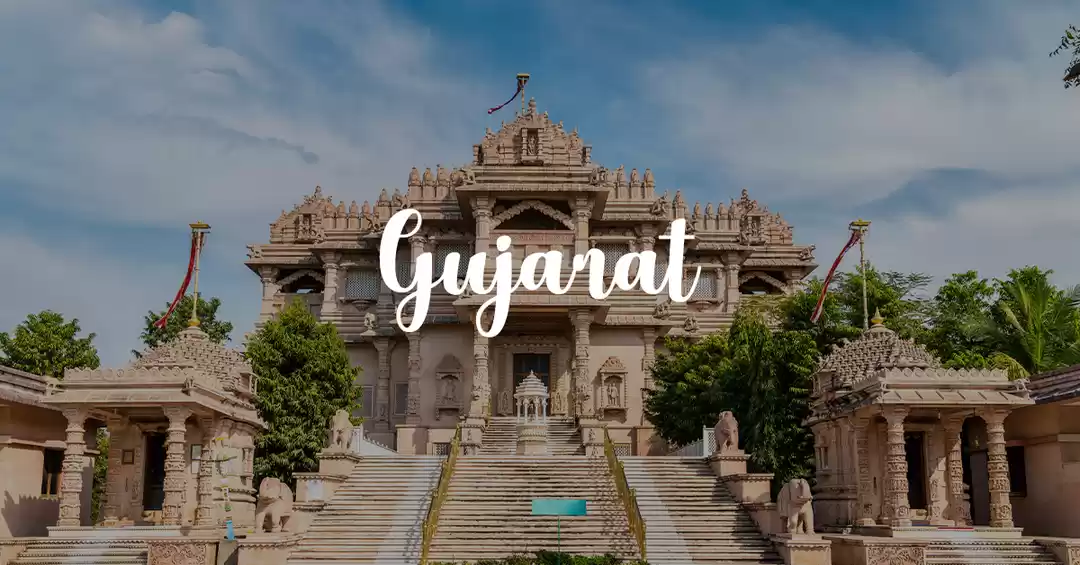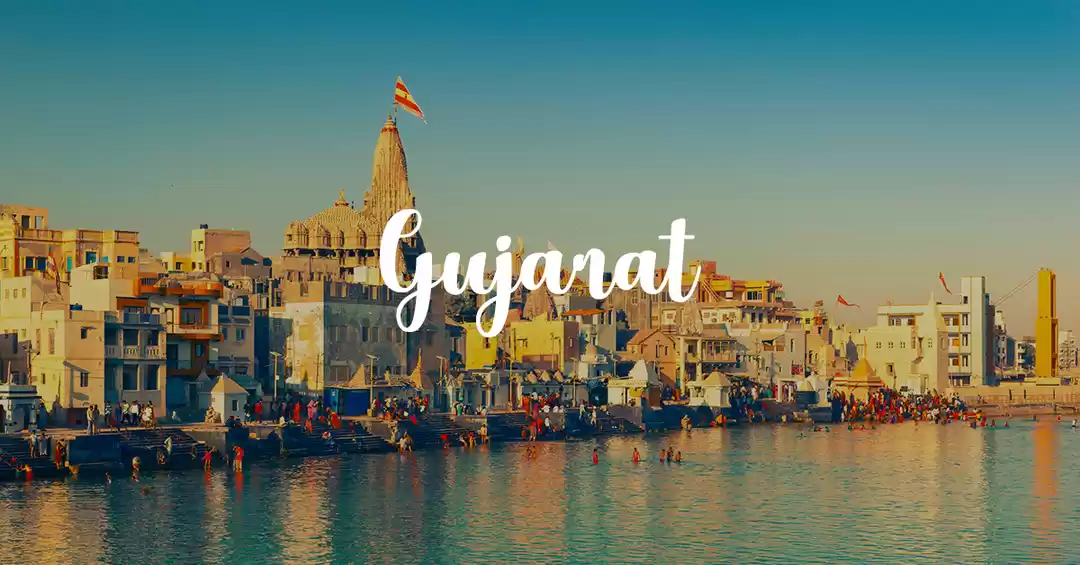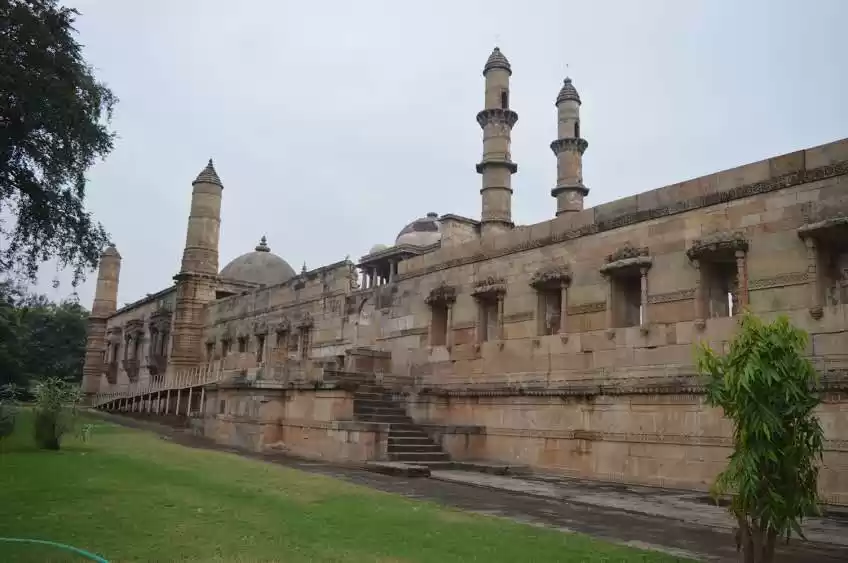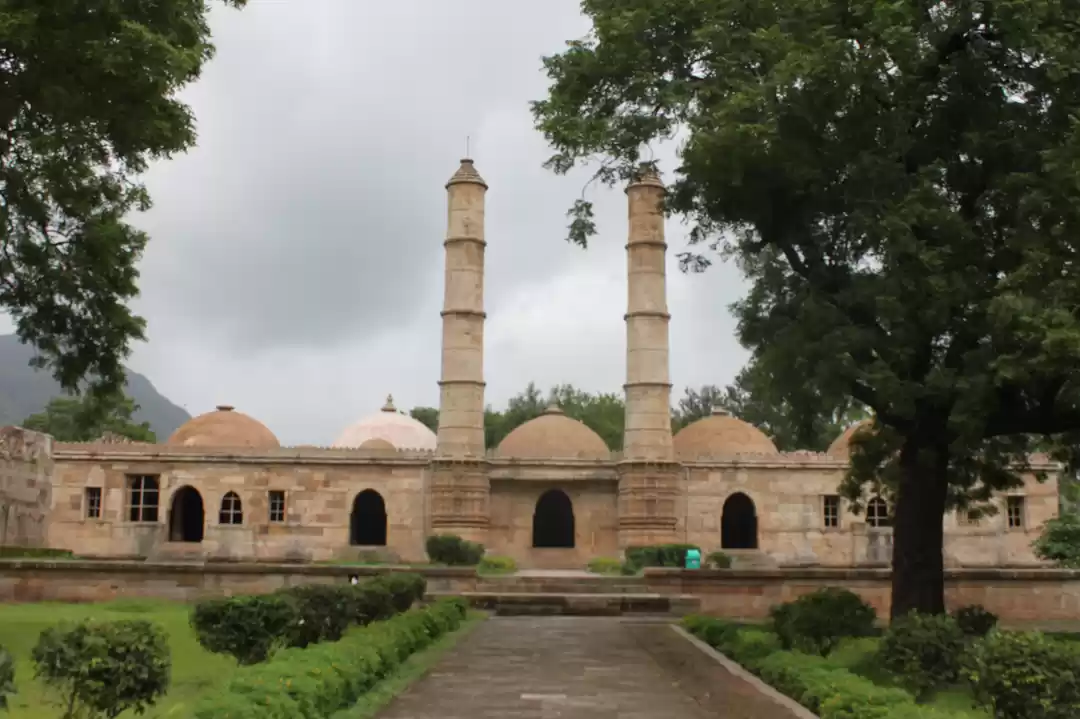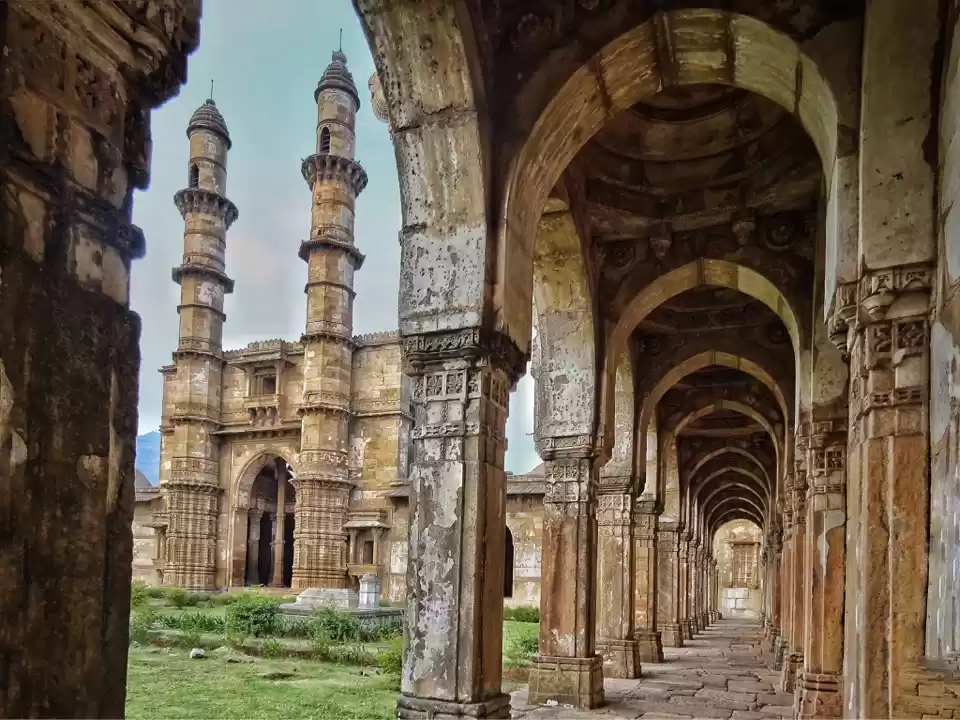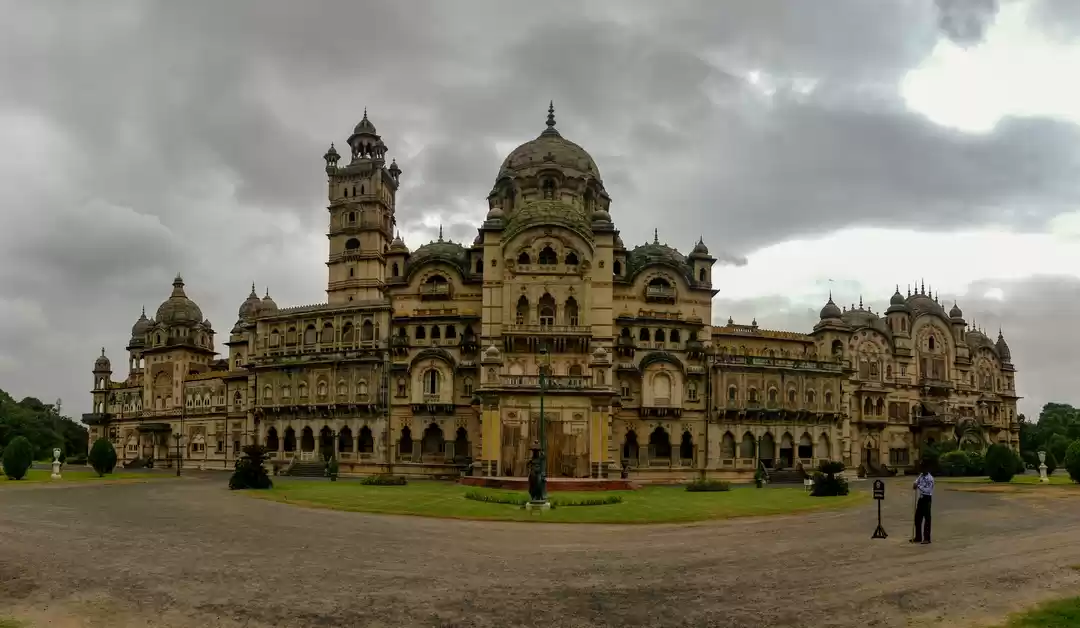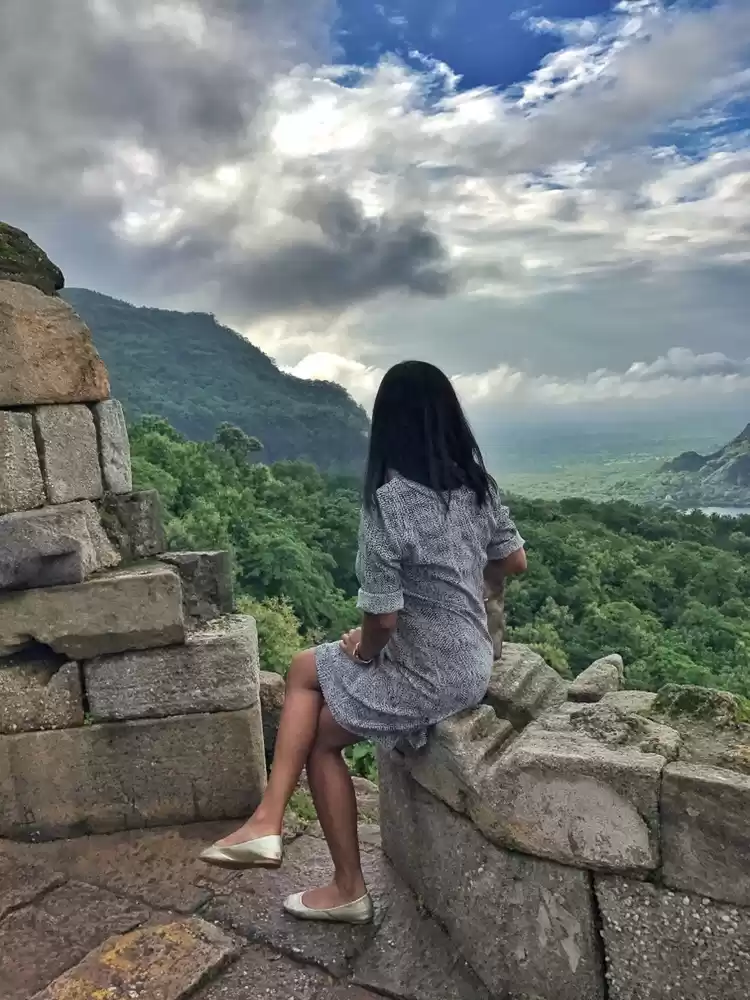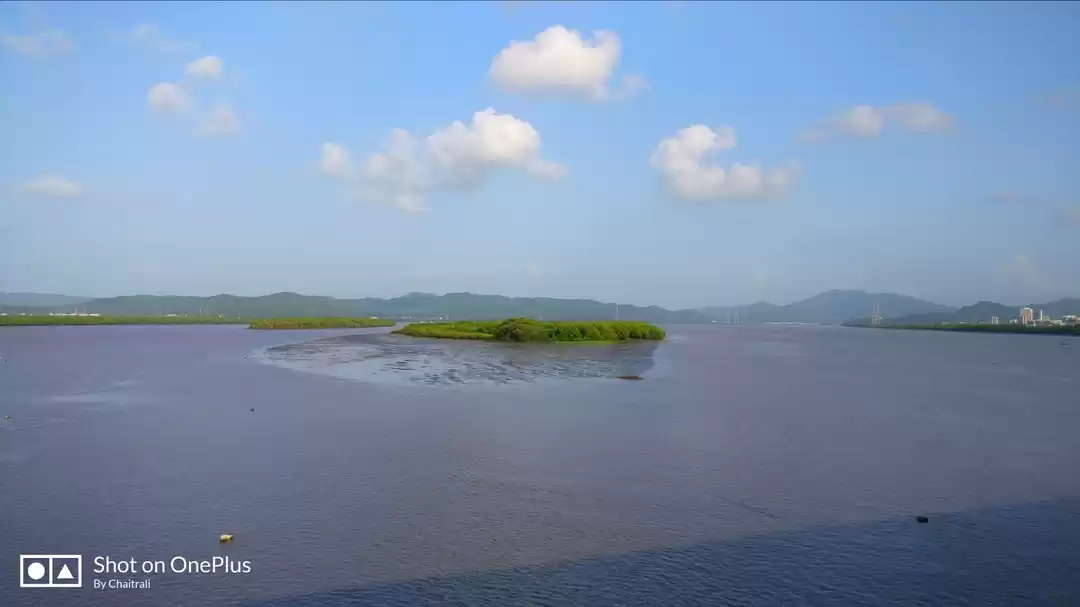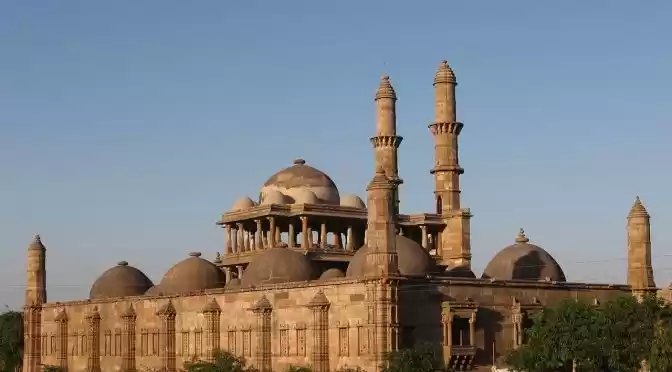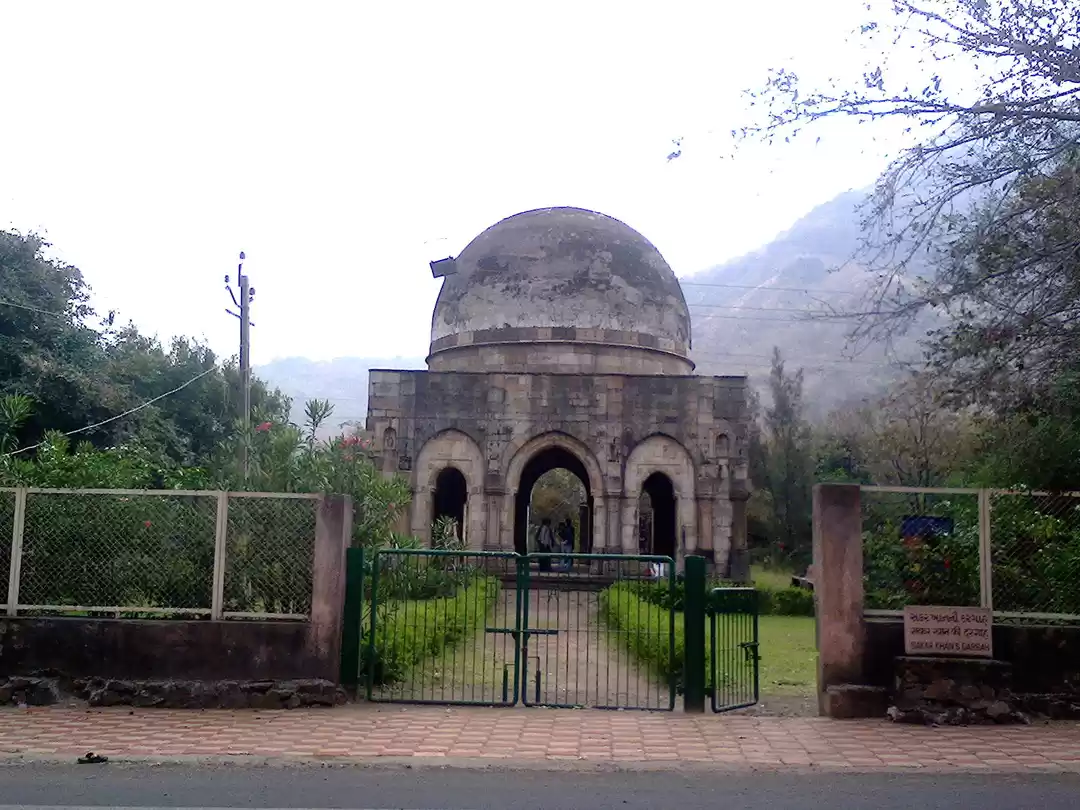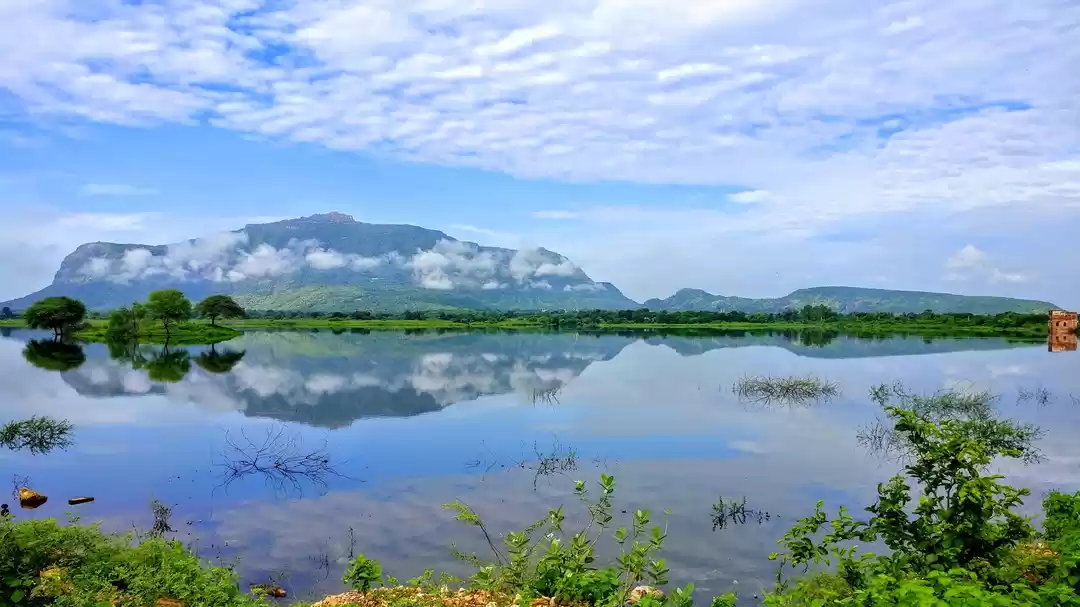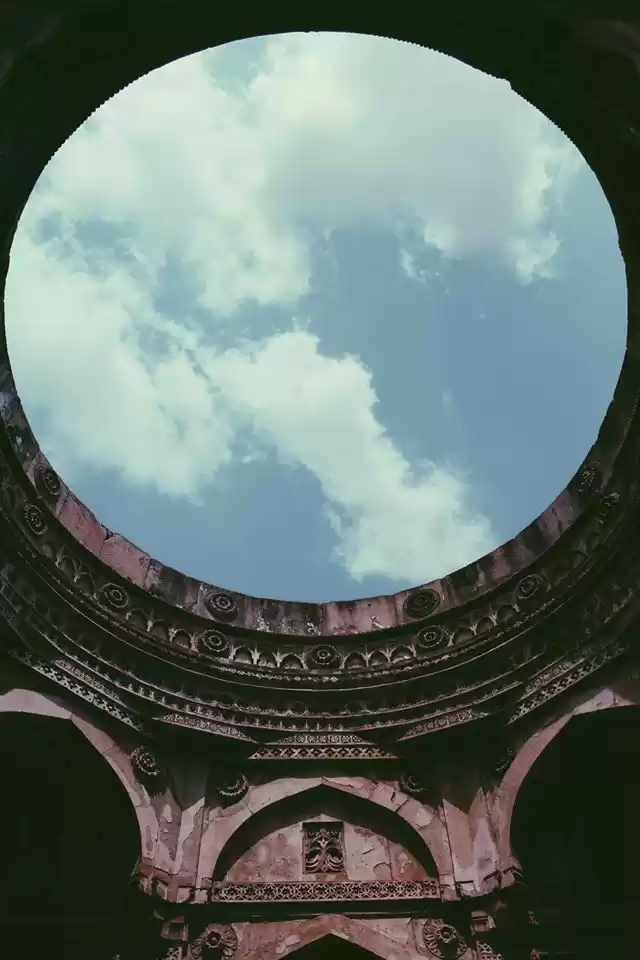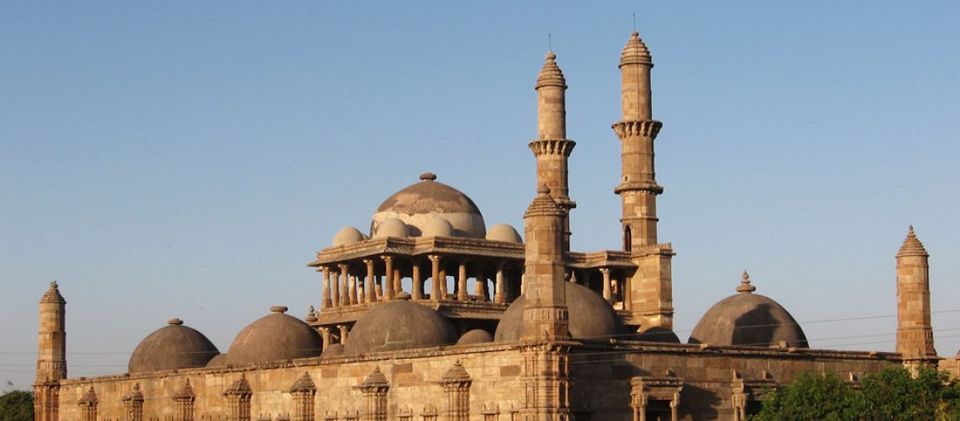
Champaner Pavagadh Archaeological Park is a hidden gem for all history and architecture lovers. For people who are fascinated by history, architecture or love photography, there is something for everyone.
Before visiting any historical site, having some prior knowledge of the history connected with that site is quite beneficial. So, I will start with the historical events of the place and then the interesting historical sites, which will make you more interested in planning a trip to Champaner-Pavagadh.
History of Champaner - Pavagadh
The Champaner - Pavagadh Archeological Park is a UNESCO World Heritage Site; and was bestowed with this status in 2004. The city of Champaner is sprawled over six square kilometres and is situated near the foot of the Pavagadh Hill.
lt is widely believed that the 8-9 th Century fortress town of Pavagadh was first ruled by Solanki Kings and then by Khichi Rajputs. The founder of Ahmedabad, Ahmed Shah laid siege to Champaner-Pavagadh in 1419 but was unable to capture it. Later on his successor Sultan Mahmud Begada captured it from the Rajput Kings in 1484 after a 20-month siege. After capturing Pavagaḍh, Sultan Mahmud built a wall around the town of Champaner and renamed it as Muhammadabad. He shifted his capital from Ahmedabad and the town of Muhammadabad was made the capital of the Gujarat Sultanate in 1485.
Being the capital of Gujarat sultanat, Champaner flourished for next fifty years till 1535, when it fell to Mughal Emperor Humayun who wanted to lay his hands on the treasures of the Gujarat Sultanate. After this battle was won by the Mughals, Humayun looted and destroyed most of the Champaner town. During this time Sultan of Gujarat left Champaner
& shifted his capital back to Ahmedabad. From here the gradual decline of Champaner began and it fell from being the capital of the Sultanate to a lost and deserted town. Champaner was later ruled by the Marathas and briefly by the Britishers also, but it was never able to regain its lost glory.
UNESCO World Heritage Site
This place was in ruins for a long period of time before getting the tag of UNESCO World Heritage site due to the hard work of Vadodara based NGO "Baroda Heritage Trust". The Baroda Heritage Trust took the initiative and carried out a landscape study of the former urban centre. A Master Plan for an archaeological park was developed for Champaner City and Pavagarh as a cultural sanctuary, and the Archaeological Survey of lndia, supported by the Baroda Heritage Trust, submitted a proposal to UNESCO to declare the site a World Heritage Site. Champaner-Pavagadh was awarded the UNESCO World Heritage Site status in 2004.
There are eleven different types of buildings at Champaner - Pavagadh, including mosques, temples, granaries, tombs, wells, walls, and terraces. The monuments are situated at the foot of and around the Pavagadh hill. The Heritage Trust of Baroda lists 114 monuments in the area, of which only 39 monuments are maintained by the Archaeological Survey of lndia, due to limited funding. Much of Champaner lies in ruins and it is a treasure trove, still waiting to be discovered!
Champaner town
Champaner fort is built completely on a flat land and is a classic example of a pre-Mughal lslamic township. The architecture and designs of the monuments are a blend of local Gujarati traditions and Islamic designs.

Champaner-Pavagadh is an interesting and unusual case study in how religion, culture, terrain, and climate interact in creating water systems that sustained large communities for 800 years between the eighth and sixteenth centuries. Champaner was a water-intelligent' settlement demonstrating an efficient, easy to operate and sustainable water management system. Water harvested from the rainwater and run off on the Hills slopes were converted into an elaborate system of macro and micro catchments with filtration which ensure the availability of water throughout the year for spiritual, aesthetic and utilitarian purpose. Champaner resident depends upon well and large water basin most of them outside of the city wall. The most notable water storage system which can be seen today is Gebanshah's Vav andHelical stepped well. Due to innumerable wells in the city of Champaran for water management, the city is also known as " city of thousand wells ".
The monuments in Champaner are not at one place. They are scattered throughout the town and far away from each other making it difficult to cover on foot. All are accessible by bike or car and its best way for visiting all the historic sites of Champaner. You can take your car inside the fort town of Champaner through the fort gates.
When you arrive from Vadodara the first thing you will see is a big old gate which is also the entry point of the Champaner, lts called as "Shari Darwaja" or "The City Gate". After this gate you can see the fort walls of Champaner city in well preserved condition.
The settlement inside the fort walls
Many people will find it interesting to see people living inside the old fort walls. The Champaner-Pavagadh Archaeological Park is a huge settlement along with the ancient sites. There are homes, schools, shops, Temples and farms inside the heritage park. If you remove the UNESCO tag from this place, lt looks similar but less deserted than the Lakhpat fort in Bhuj, which we visited few days before. Inside you will see few people and empty space full of wild vegetation.

Near Bhadra Gate
Mosques are scattered throughout the Champaner, but the two most beautiful Mosques, Jami Masjid and Shahar ki Masjid, are the most accessible and near to the main road. Shehar ki Masjid is the only mosque located inside the Champaner walled city.
Jami Masjid and Shehar ki Masjid are the only two mosques in Champaner which have guards and ticket counters. Ticket purchase at any one place is valid for all the sites that come under Champaner-Pavagadh Archaeological Park. Flash photography and selfie sticks are not allowed inside the premises of both the Mosque, but there is no additional charges for carrying camera and taking pictures.
Jami Masjid

Jami Masjid side view
Jami masjid- the grandest of all in Champaner, is also known as the mosque with the best architecture in all of Gujarat. Jami Masjid is well known as a perfect amalgamation of lndo-lslamic architecture which was constructed in late 15 th century. It stands on a raised platform and comprises of a walled structure. It is rectangular with the entrance on the east side. There is a portico which has a large dome built over a podium. East pavilion is the most imposing and beautiful with geometric designs and jali work. There are steps to the mosque from northern and southern directions. Third entrance to the mosque is from the southern side (towards main roadside).

Jami Masjid entrance

Jami Masjid

Tomb of a pir

Jami Masjid minarate

Muluk Khana

Before the entrance to the prayer hall, there are two imposing minars of 33 meters high on either side of the central entrance. Intricate carvings and geometric designs can be seen on all sides of minarets' base with flower, foliage motif and the pot design at prominent points.
The roof just behind this dome is filled by a carved slab of great beauty and ingenuity of workmanship. There are seven mehrabs in the back wall of the main prayer hall, the central being more elaborated, The northern section of prayer hall called "Muluk Khana" was separated by a perforated screen, reserved for ladies, from where an extra entrance was provided.

Sahar ki Masjid
A pillared corridor goes round the vast courtyard opening inside in ogival arches supported by pillars. Inside the courtyard some pir is buried and the mosque was a place of pilgrimage for those who seek blessings from the pir. Outside the mosque, there is an octagonal step well tank for ablutions.

Sahar ki Masjid mihrab

Pillars inside Sahar ki Masjid
Sahar ki Masjid
Sahar ki Masjid was a private Mosque of the Sultan constructed very close to the royal enclosure for sultan and his family's exclusive use.

Kevda Masjid, Image © : Mayur-B-Patel, wikimediacommons.com
This mosque has five mehrabs, an arched doorway, flanked by two minarets. The main entrance is through an arched doorway which is covered by a projection, sloped chhajja (canopy). Two more entries on either side of the central mehrab are flanked by jharokhas (windows).
Corresponding to each arched entry is a large dome, surrounded by four small domes on all its four sides which can be seen from inside the mosque. A rectangular ablutions tank was constructed on a platform.
Kevda Masjid

Nagina Masjid, Image © : Bhajish Bharathan, wikimediacommons.com
In the corner of the town just a kilometre from Jami Masjid there is kevda Masjid. beautiful and this Masjid is beautiful with many mihrabs. The prayer hall, a double storied structure, had three domes but the central dome has disappeared. The balconies and the minarets have intricate carvings.
The main attraction here is not the mosque but the cenotaph which is next to the mosque. This is a picture perfect place with few peoples around. There is no entry fee for visiting Kevda Masjid.
Nagina Masjid
Nagina Masjid is a grand structure built with pure white stone on a high plinth and a large open yard in the front. At the main entrance, the masjid is marked by minarets with intricate and elegant carvings. These minarets are not as tall as with other mosques of those time. Nagina Masjid has three large domes rise over the main prayer hall, above decorative columns and windows. This Mosque is slightly away from Kewda Masjid and you can reach there through a dense vegetation. To avoid scratches on our rental car, we left this mosque.
Like Kewda Masjid, the most attractive architecture here is a beautiful four wall cenotaph next to the Mosque. This cenotaph is not the part of the mosque, but it looks stunning.
Mandvi (Custom House)
Mandvi custom house was build during the Maratha rule of Champaner, which was used as an octroi post. This place from outside look like a passage way with pillars and arches but sizeable structure from inside. There are no domes on this structure. The ASI (Archaeological Survey of lndia) office in Champaner is located next to Mandvi Custom House.
Three Cells
The building with three cells is located between Mandvi and Seher Ki Masjid. We left it due to bushes around and limited access.
Kamani Masjid
This Masjid is known as Kamani masjid due to its pillared hall full of arches. The central hall has a marble roofed dome fixed with tiles. More information is not available about this mosque, whether it's an incomplete mosque or damaged with time. This is not visited by many peoples due to its location which is slightly out of the way and thick vegetation around. This place is mostly restored by ASI, which was originally build in 15 th century. There is no entry fee for visiting Kamani Masjid.

Helical Step Well, Image © : Shivrekha and Nandicmb, wikimediacommons.com
Bawaman Mosque
Bahaman Mosque on the way between champaner and Pavagadh machi when you start climbing the hill by road. Mosque is next to the road and easily accessible. Built on a raised platform on a high plinth, the mosque has a minaret, three large domes, three mehrabs on the rear wall and three arched entrances with an ablution tank nearby. Main structure with the dome is still intact with many of its structural elements damaged and there wasn't much to expect of archaeological beauty. There is no entry fee for visiting Bawaman Masjid.
After visiting all these places when you start back in the direction of Vadodara, you will find a big lake in the left side, Patal lake. Continue few hundred meters and on the right side there are two small pathways one after the other leading to a small helical stepwell and Ek minar ki masjid. Next is Gebanshah's Vav after a Kilometer from Ek minar ki masjid on the left side of the road. You can visit all of them before or after your trip to Champaner-Pavagarh.
Gebanshah's Vav
Helical Stepped Well
Helical stepped well was made mainly of bricks and stone paved steps, constructed around 16th century AD. It consists of about 1 meter high parapet wall, a main shaft & the entrance. Stone paved steps from the entrance are attached to the walls of the shaft descends in the form of a snake coil. This was probably to facilitate users of the well to reach till the lowest water level.
Ek Minar ki Masjid
As the name suggests, the mosque comprise only of a solitary minar. This single minaret is equal to five story tall building and looks stunning with nothing around. Other than minar, all other architectural features have disappeared with time. Ek Minar ki Masjid is located outside the city limits of Champaner. This place is a protected monument by ASI and a gaurd is appointed on site. There is no entry fee to visit this place.
Gebanshah's Vav is simple yet sophisticated water management structure at the base of Pavagadh hill. According to the classical texts, there are four type of stepwells, viz., Nanda, Bhadra, Jaya & Vijaya. This is a Nanda type of stepwell which was built around 16th Century by a fakir called Gebanshah. The stepwell is quite deep and is fed by subsoil flow with soil acting as a natural filter. Special sandstone was used for its construction and it is minimally ornamented.
Best time to visit
Summer season is very hot and humid in Gujarat and should be avoided. Winters are most preferred time for visiting Gujarat and late October to early March has good weather. Monsoon is also a good time for visiting Pavagadh hills where many small waterfalls are formed during that time.
Pavagadh is a sacred place and Temple remain open throughout the year. Pilgrims who visit for religious purposes arrive throughout the year irrespective of weather conditions.
Entry fee
Entry fee is ₹ 40 for Indian citizens and ₹ 250 for foreigners. Ticket once purchased can be used for all the locations at Champaner wherever applicable.
Where to stay
There are not many decent options in the vicinity of Champaner apart from "Hotel Champaner", at Machi operated by Gujarat Tourism. On Jambughoda Road there is "Champaner Heritage Resort" with decent accommodation and additional tour operated by them. More hotel options are available at Halol, which are mostly budget hotels.
Accommodation at the Champaner-Pavagadh site is limited to many small hotels and dharmashalas.
How to get there
The nearest major city to reach Champaner is Vadodara (formerly Baroda). Champaner is around 50 km from here. Frequent buses are available from Vadodara to Pavagadh bus station (Champaner town) and from there buses and share taxis running all the way up the mountain of Pavagarh.
I would highly recommend coming here by your own vehicle or hired vehicle if you wish to cover most of the attractions. Cars can be hired in Vadodara and most of the places in Champaner can be covered by car which are far from each other.
Nearest airport is Vadodara airport, which is well connected with many major cities with few flights a day.
lf you wish to come by train, you can either get down at Vadodara junction which is connected with most of the cities in India through direct trains or at Champaner Road railway station. Champaner Road is a small station and the only long-distance train that stops at Champaner Road railway station is Mumbai Bandra Terminus - Dehradun Express. From Champaner Road station you have to go to Halol town or Champaner which is 20 KM away.





